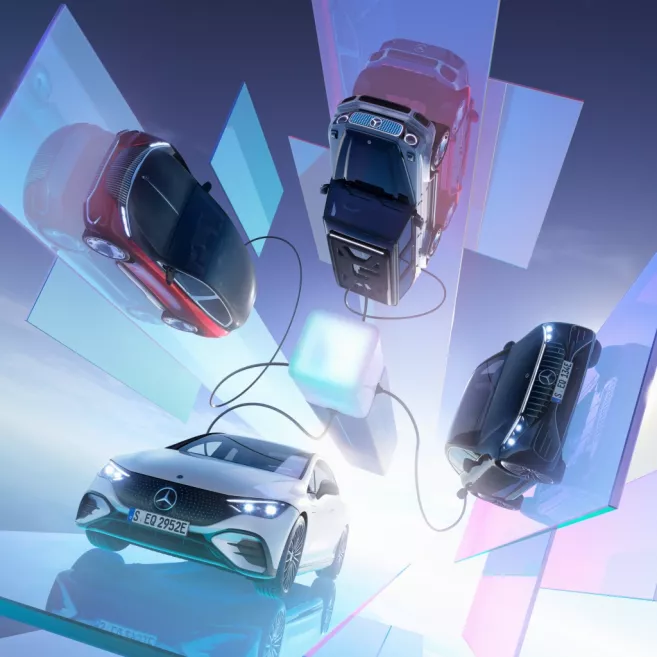*This article is reproduced from the autocarweekly WeChat official account.
Author: HooKnows
The last time a major international auto show was held anywhere on earth outside of the mysterious ancient countries in the East was the Geneva Motor Show in early 2020, which was canceled due to an emergency just before its opening. In one online press conference after another, car manufacturers held out for a year and a half, to the point that the IAA, famous for the “Frankfurt Motor Show”, has moved to Munich – inadvertently making the “Frankfurt Motor Show” history.
Even more “inadvertently”, electric cars have indisputably taken center stage in Mercedes-Benz’s product line after just a year and a half.
A brand-new debut car EQE, a brand-new model AMG EQS 53, two concept cars EQG and Maybach EQS (SUV) that are certain to be produced, covering Mercedes-Benz’s four major sub-brands EQ, AMG, Maybach, and G. Mercedes-Benz’s new car lineup at this year’s IAA “Munich Motor Show” is all-electric, leaving no room for distractions.
EQE: Small EQS, 700km, to be domestically produced next year
The C spot in the C spot undoubtedly belongs to the EQE, which made its global debut. Mercedes-Benz’s first electric car based on the all-new pure electric platform EVA, is a flagship EQS. Mercedes is opening up another full product line, “A-C-E-S,” under the EQ brand. EQS corresponds to the “S-Class electrification” – a large luxury flagship sedan. EQE corresponds to the “E-Class electrification” – a medium-to-large executive sedan.
Mercedes-Benz does not shy away from calling the EQE “a smaller EQS,” the most prominent feature of which, like the EQS, is the unique and advanced “One-Bow” bow-shaped bodywork. Without the mechanical structure of an internal combustion engine, the front and rear windshields extend greatly to both ends, creating interior space that exceeds that of fuel-powered vehicles of the same size; the transition between the roof line and the front and rear of the car is also closer, significantly reducing the drag coefficient.
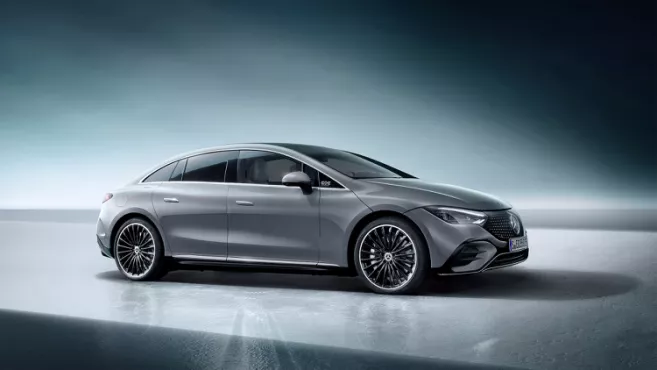
What is relatively less easily perceived is the striking wheelbase ratio (the ratio of wheelbase to overall length). The EQE is 4946 mm long, similar to the standard wheelbase E-Class (4942 mm) in length, but its wheelbase is 3120 mm – almost 200 mm longer than the standard wheelbase E-Class! It is also longer than the long-wheelbase E-Class and the standard-wheelbase S-Class. Among Mercedes-Benz’s sedan products, only the long-wheelbase/Maybach S-Class and EQS have a longer wheelbase than the EQE.Compared with same-sized fuel cars, the ultra-long wheelbase of EQE is “level up”. In addition, with the “One-Bow” roof that runs through from front to back, the interior space of EQE is comparable to that of S-Class. Such a space performance may make the locally-made EQE, which has already been confirmed to be launched next year, unnecessary to further extend the wheelbase for local characteristics.
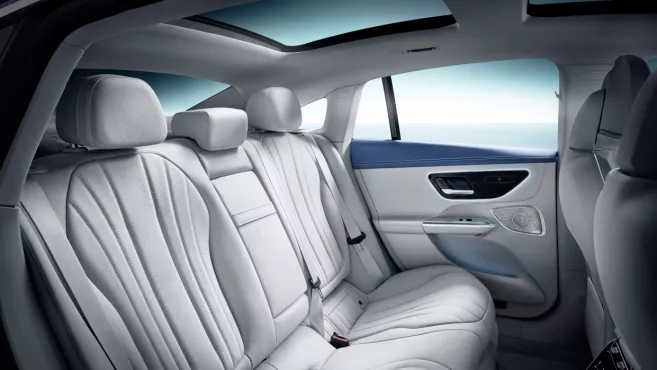
Similar effects have actually appeared in EQS, but because EQE is closer to us, it is more shocking. The amazing wheelbase ratio also appears on the Smart concept car Concept #1, which was released at the same time. A small car with a length of 4.2 meters has a wheelbase of 2.7 meters.
It can be seen that Mercedes-Benz’s attitude towards electric vehicles is to “maximize the structural advantages brought by electric drive” without compromising the inherent advantages of electric vehicles to comply with the aesthetics of the fuel era. Electric drive eliminates the protrusions of the drive shaft and the floor, and releases the space for longitudinal engines and gearboxes, allowing the front and rear wheels to be infinitely close to the corners of the car body. The roof extends forward and backward at will, and also helps reduce wind resistance.
The traditional three-box sedan shape has been discussed and questioned many times, but this time the questioner is the strongest car expert in human history, Mercedes-Benz.
As for the flexibility issues brought about by the ultra-long wheelbase, Mercedes-Benz uses rear-wheel steering with a maximum deflection of up to 10° (4.5° for the normal version) to solve it. It allows EQE to have a minimum turning radius of only 10.7 meters (11.7 meters for the 4.5° version).
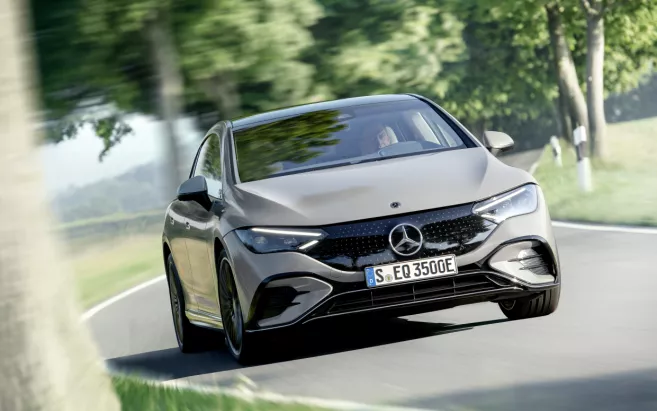
The 811 ternary lithium battery pack with a capacity of 90 kWh (probably provided by CATL in China) uses a 10-module structure with more modules for safety reasons. The range is 700 km under the Chinese CLTC standard and 660 km under the European WLTP standard. DC and AC charging ports are located on the rear side of the vehicle body for easy parking. EQE supports a maximum of 170 kW fast charging. Based on a range of 660 km, it can charge up to 250 km of range in 15 minutes.
The EQE 350 model already launched is equipped with a 215 kW/293 horsepower permanent magnet synchronous motor on the rear axle, with a peak torque of 530 N·m. Then there will be a 4MATIC four-wheel drive version with front and rear dual motors, and a high-performance version (AMG) with a power of 500 kW is also planned.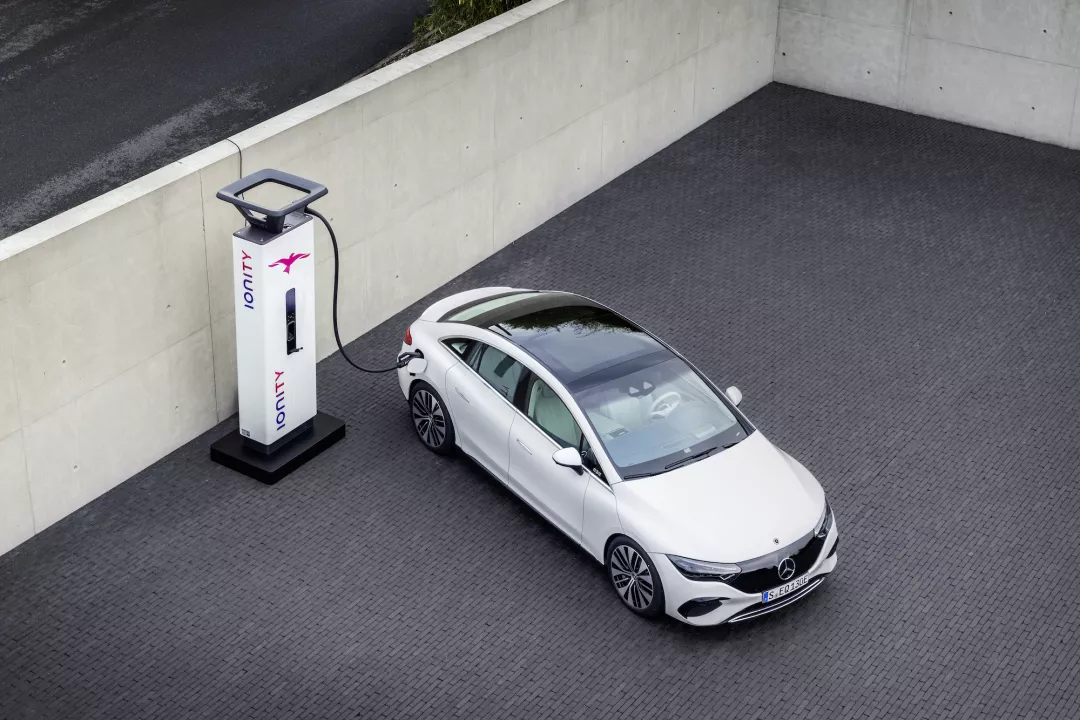
The interior of EQE speaks for itself entirely with the image. The cabin design concept of EQS is fully inherited by EQE. MBUX Hyperscreen’s three huge screens cover the entire dashboard, similar to EQS, and the interaction system also features haptic feedback and the “zero-layer interaction” concept. Only with careful observation will you notice that EQE has a new steering wheel design that differs from EQS.
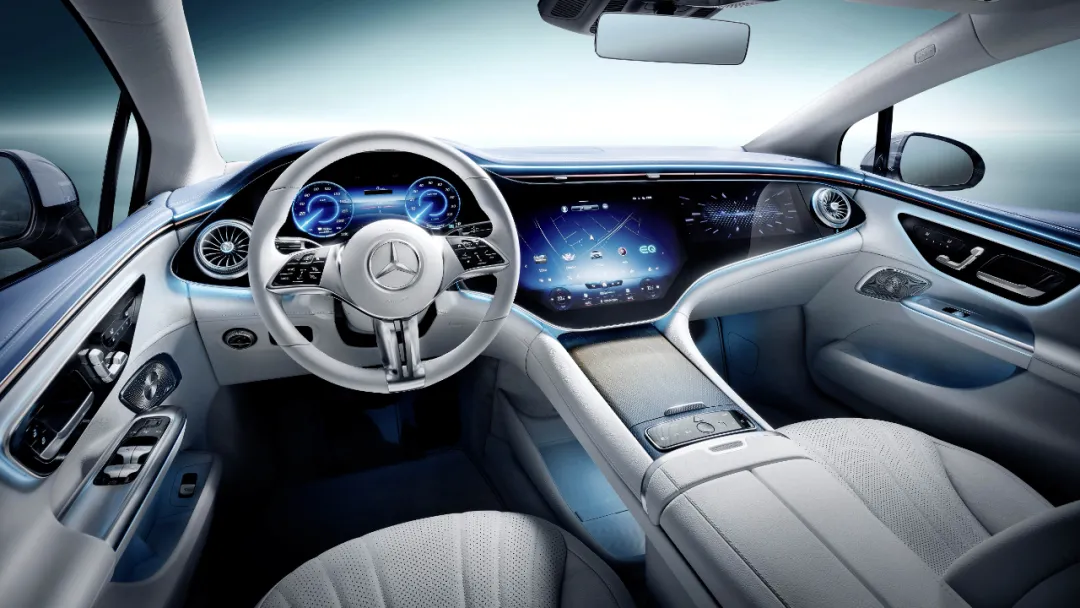
Most importantly, EQE is much closer to us than expected. The global debut of EQE just happened, though it has been tested in disguise in China for a while. Beijing Benz will start producing EQE in 2022, which is also Mercedes-Benz’s first domestically produced EVA pure electric platform electric vehicle.
Maybach’s “Monogram” is here
Also in 2022, Mercedes-Benz’s flagship electric SUV: EQS SUV (let’s call it that for now) will be officially unveiled. Its Maybach version will arrive in 2023, and the Maybach EQS concept car is a preview before mass production. In other words, this concept car actually gives us an idea of what the non-Maybach version of Mercedes-Benz EQS SUV might look like.
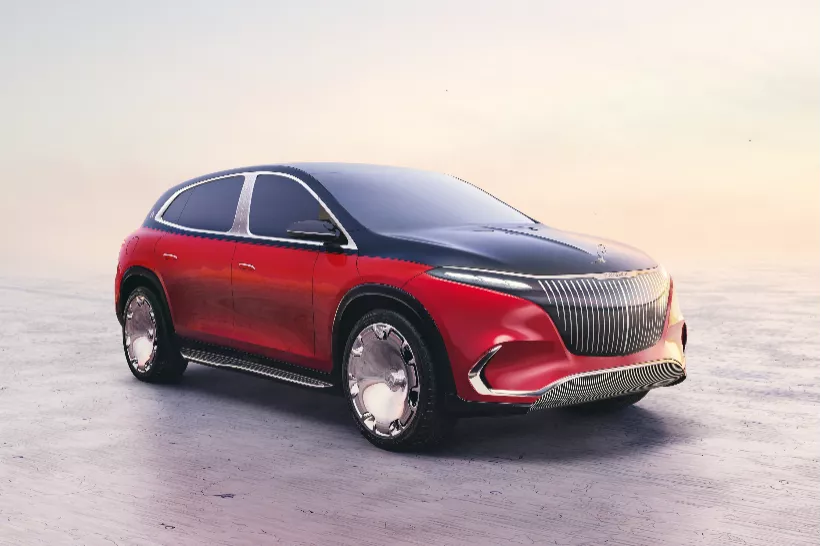
In 2018, Maybach released a “Supreme Luxury” concept car that combined SUV and sedan at the Beijing Auto Show. Today’s Maybach EQS looks quite similar to it, except that the body shape returns to a traditional SUV. The chrome trim strip in the middle of the hood, two-tone paint, disc-shaped rims, and C-pillar Maybach logo can all instantly recognize it as a Maybach.
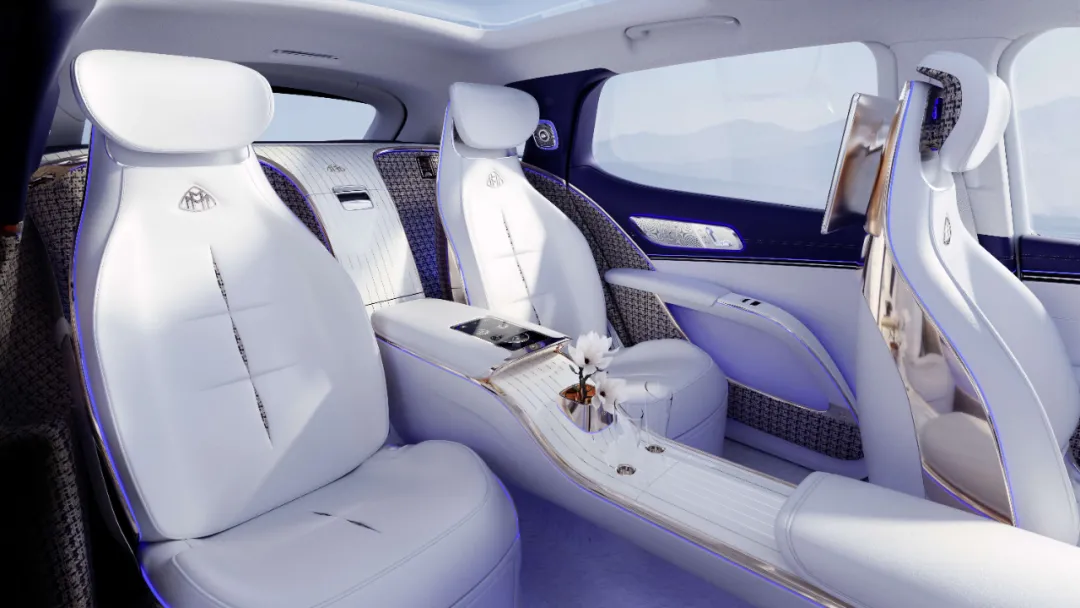
The new design lies in the details, where Maybach suddenly fell in love with LV “Monogram” style: the internal headlights, chrome B-pillar, and even the background of the in-car screen display are all filled with repeated arrangements of the double-M Maybach logo. Next, Maybach will likely want to turn its “Monogram” into a brand-defining visual element like LV, Burberry, and GUCCI.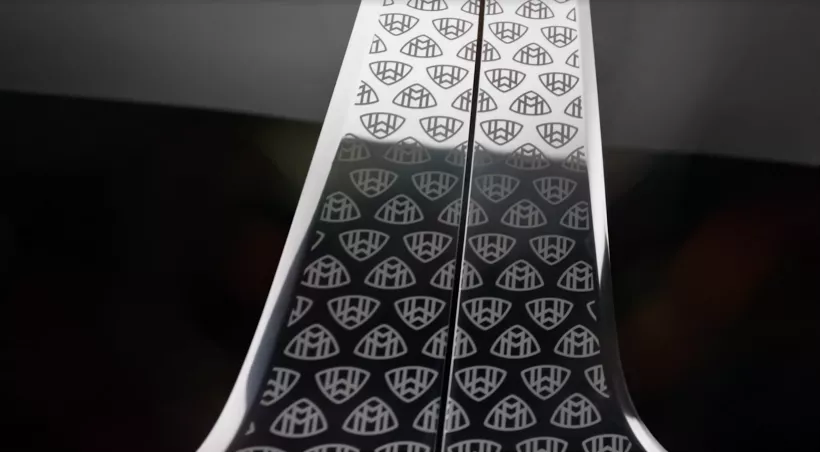
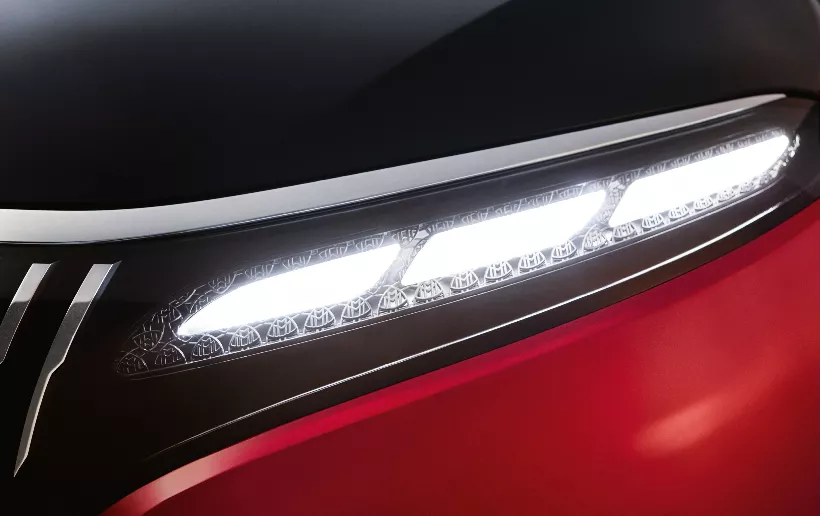
EQG is still the “big G”
The electrification of the legendary G-Class off-road vehicle has been anticipated for a long time. Therefore, the arrival of the EQG is not unexpected. In the end, Mercedes-Benz has given the EQG a more modern and futuristic look, but the overall shape and classic design of the G-Class are still retained.
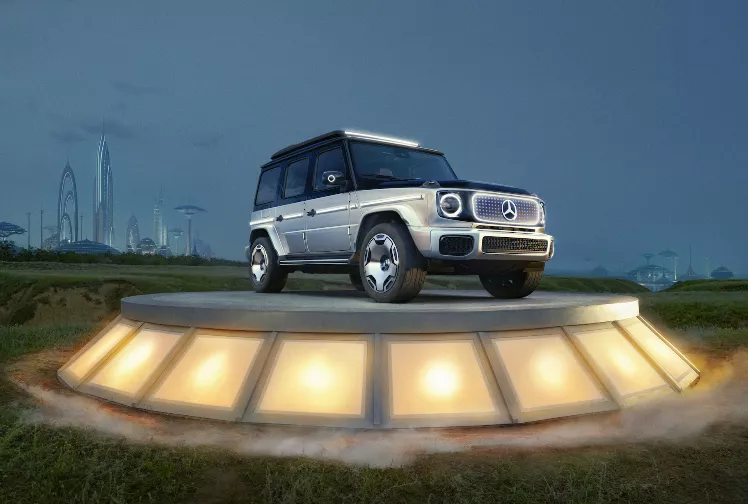
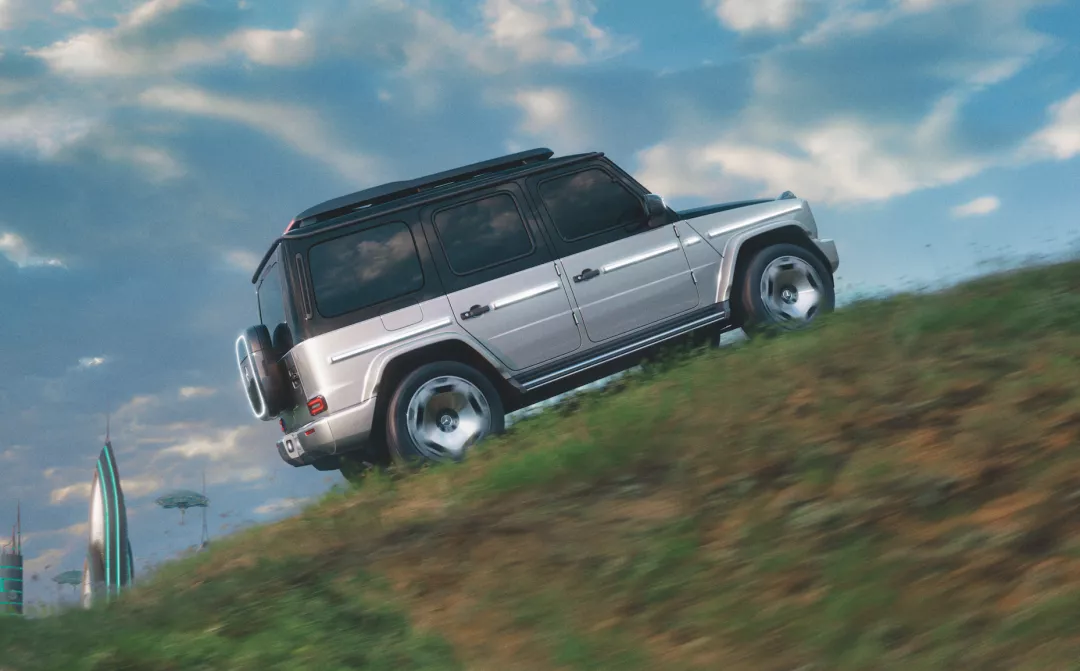
The round headlights of the G-Class have been inherited by the EQG without any changes, and the spare tire “little backpack” has become a rounded rectangle (inspired by a home charging case), which ensures that even aliens can recognize that it is still the same “G” from decades ago.
The EQG has indeed attracted “aliens”. In Mercedes-Benz’s promotional video, the theme is “Imagine the world in 2021 (the year when the G-Class was born) in 1979”, featuring some low-budget props and psychedelic makeup and hair, which gives a retro-futuristic feeling reminiscent of sci-fi films from the 1970s, wild and bizarre.
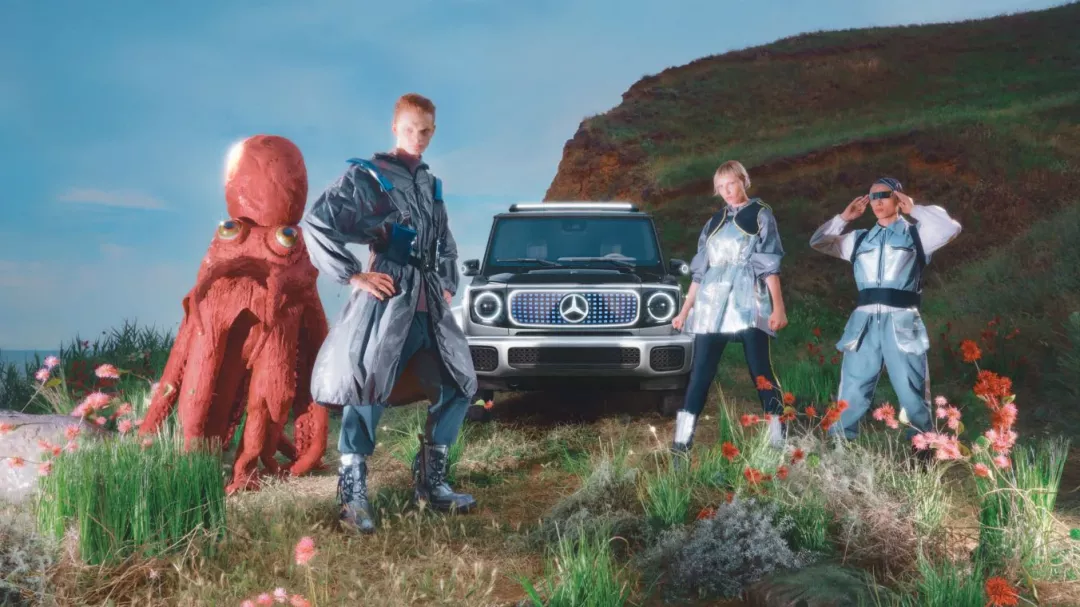
It’s reminiscent of the interstellar theme of GUCCI’s autumn/winter 2017 collection.
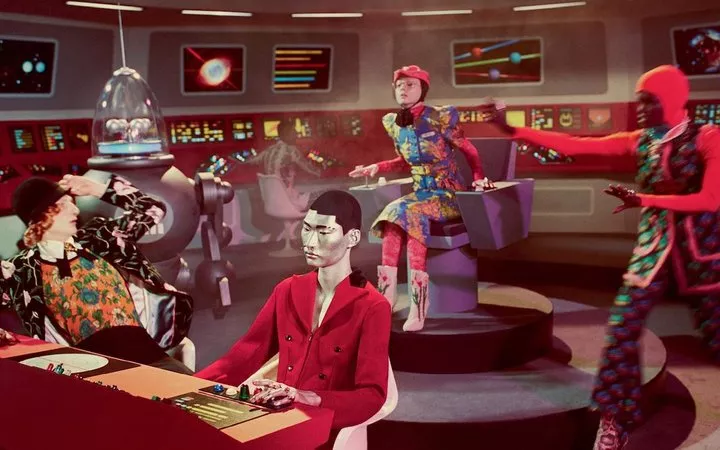
As for the technology, Mercedes-Benz promises that the production version of the EQG will be equipped with four independent electric motors for powerful off-road capability on non-paved roads. The rear axle will be equipped with a two-speed transmission for balance between road and off-road driving capabilities. However, the four independent electric motors also mean farewell to the differential and differential lock of the EQG, although the concept car retains the “three lock” switch on the dashboard like a business card.Mercedes-Benz said that the EQG will use a front independent suspension and a rear solid axle, which means it is still based on the non-load-bearing chassis of the current G-Class, not a completely new pure electric platform. Fortunately, the EQG is probably unique, and we prefer it to use the fuel version chassis rather than switching to a pure electric platform for electric vehicles. After all, compared to electric performance, “being a G-Class” is what EQG needs most.
When AMG meets EQ
The combination of AMG and EQ has been long prepared. Mercedes-AMG’s F1 racing car has “EQ Performance” as a suffix, and AMG’s plug-in hybrid models are also called EQ Performance. The first EQ model officially handled by AMG is the AMG EQS in front of us. However, the AMG EQS is not the first electric car created by AMG. In 2014, AMG experimentally launched the electric version of the SLS sports car, the SLS AMG Electric Drive.
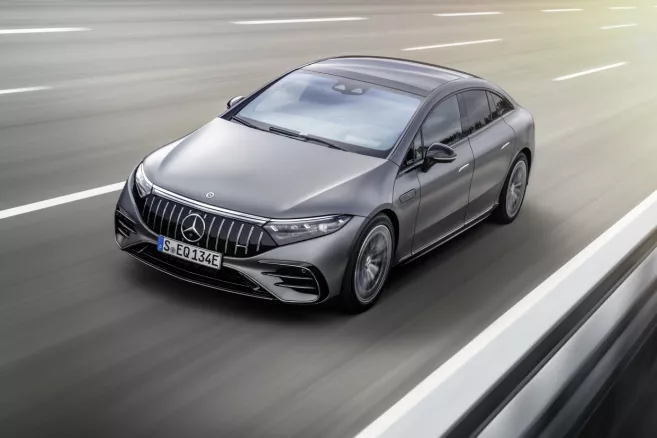
But the AMG EQS is the first official partnership with pure electric vehicles. The new car is named EQS 53 4MATIC+ instead of the classic “63”. On the one hand, perhaps in the eyes of AMG, it is not the peak of its own electric vehicle performance. On the other hand, it eliminates the joke of “how electric motors are person-specific tend to be” . After all, the 53 series does not originally have a “one-person-one-machine” configuration.
The EQS 53 4MATIC+ uses front and rear dual motors to form all-wheel drive, and the total motor power can reach 560 kW/761 horsepower during acceleration, and the torque is over 1000 N·m. At over 80% power, the 0-100 km/h acceleration only takes 3.8 seconds/3.4 seconds (with a performance package option), and the top speed is limited to 220 km/h and 250 km/h by electronics. The 108 kWh battery pack optimized for high-performance output provides 526-580 km of WLTP range.
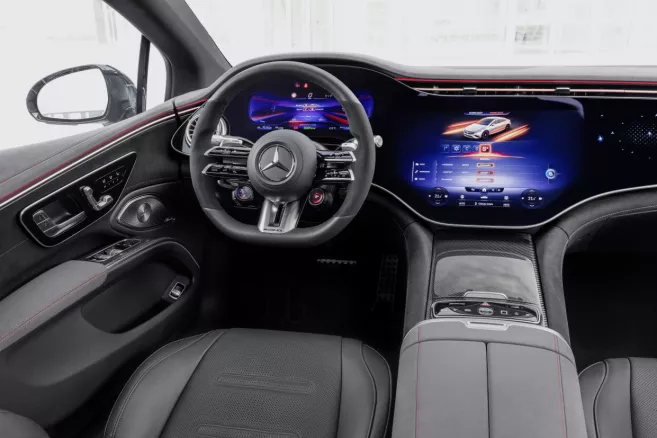
AMG also specifically developed an acoustic system, the AMG SOUND EXPERIENCE, for pure electric performance cars. It can play sound effects according to the vehicle driving status and driver’s choice, enhancing the subjective experience of driving dynamics emotionally. Even without the noise of an internal combustion engine, performance cars clinging to apple trees should not be silent.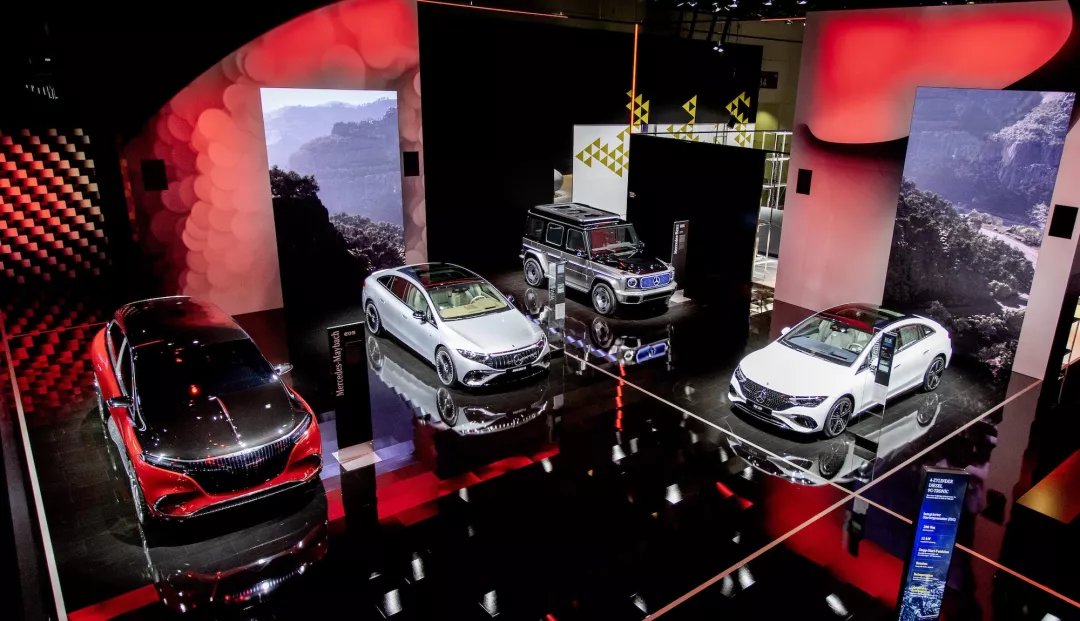
Do you remember the classic confrontation between Tesla / new car fans and traditional giant car enthusiasts? “Once the traditional giants turn around, they can easily crush / kill / overthrow…”
Now the moment of confrontation has really come. EQC still has a relatively primitive fuel chassis, but EQS is already the product of Mercedes-Benz’s new pure electric platform EVA; while EQS has a relatively small market space as a flagship, EQE penetrates into the administrative-level market with considerable sales volume. Not to mention that Mercedes-Benz has brought together EQ, AMG, Maybach, and G four sub-brands of electric vehicles, which already show its obvious intention.
EQS has only been released for a few months, and Mercedes will push EQE, a lower-level model, to the market. EQE is so close to flagship EQS that except for the size, there is almost no difference. EQS’s core competitiveness has almost been given to EQE. Considering the staggered rule that the price of E-Class sedan is similar to that of C-Class SUV, the pricing of EQE can refer to the domestically produced GLC SUV, which has almost the same power system, that is 400,000 to 500,000 yuan (or higher).
Based on the pure electric platform (which means the competitiveness of electric performance), this is a very close-to-blank segment market for luxury electric vehicles produced in China. NIO, GAC, and other carmakers may be able to provide more “bucket” configurations, more intimate services, and more user-friendly functions, but a domestically produced pure electric Mercedes-Benz on the EVA platform is definitely an important heavyweight competitor that cannot be ignored.
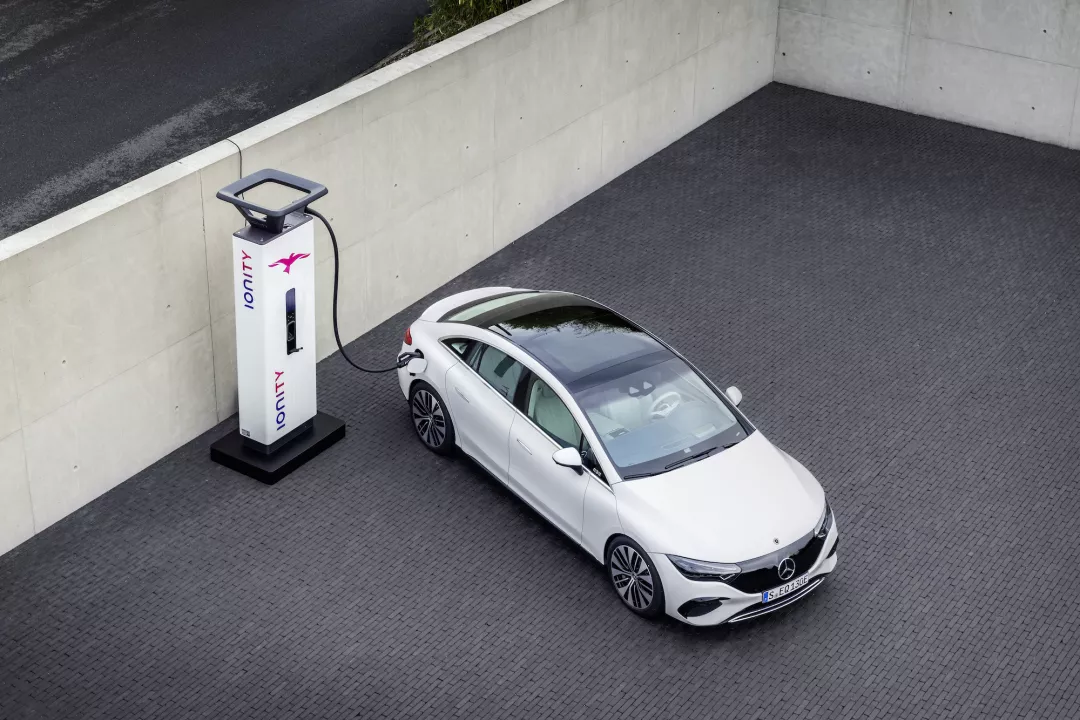
What is more important than EQE itself is that when Mercedes-Benz puts away its arrogance, breaks the established sequence, and allows EQE to become a new concept electric vehicle that takes over the core competitiveness of the flagship, it may be realized that so-called “traditional” brands have been abandoned for three days; when the EVA platform is manifested, and two new models of “complete” cars of different levels are introduced within a few months, it may be necessary to rethink what the so-called “accumulation” of old car companies actually means.
Starting from 2025, all new car model architectures released by Mercedes-Benz will be pure electric platforms, and by 2030, only pure electric vehicles will be sold in markets where conditions permit. Now, in 2021, we have seen four new pure electric cars that have been mass-produced (EQA/EQB/EQE/EQS), and two new models (EQS SUV/EQG) that are confirmed to be in production soon. This progress is fulfilling the promise of a comprehensive shift to electrification.
After more than 100 years, we can still believe in Mercedes-Benz.
This article is a translation by ChatGPT of a Chinese report from 42HOW. If you have any questions about it, please email bd@42how.com.
